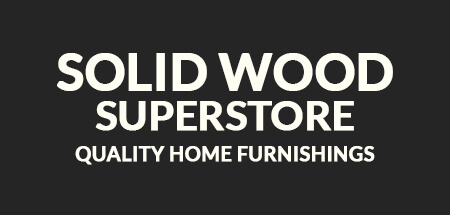Why Solid Wood Beds Outlast Engineered Options
Posted by Solid Wood Superstore on 29th Oct 2025
When choosing a bed frame, buyers often debate between solid wood and engineered options such as MDF, particleboard, or veneer-based frames. While engineered wood may appear more affordable, solid wood beds provide unmatched durability, repairability, and long-term value.
Solid Wood Superstore helps Edmonton homeowners make the best investment by offering bedroom furniture built from genuine solid wood that is designed to last for decades.
What Are Engineered Wood Beds?
Engineered wood beds are made from materials like medium-density fiberboard (MDF), particleboard, or wood veneer layered over a core. These products are widely available because they are inexpensive to manufacture and often mimic the look of solid wood.
Pros of engineered wood beds include:
- Affordable price points
- Lighter weight for easier transport
- Variety of finishes that replicate wood grain
Cons of engineered wood beds:
- Limited strength and lower weight capacity
- Poor resistance to moisture and wear
- Difficult or impossible to repair once damaged
Strength and Weight Capacity Compared
Solid wood beds are inherently sturdier because they are crafted from dense, natural lumber. They hold greater weight without sagging and maintain their shape even after years of use. Engineered wood frames, by contrast, often rely on thin supports and adhesives that can weaken under stress, leading to cracks, squeaks, or collapse. For families or couples, solid wood offers superior stability and peace of mind.
Resistance to Wear and Tear
Every bed frame faces daily use, and materials respond differently to wear. Solid wood resists dents and scratches and can even withstand minor moisture exposure with proper finishes.
Engineered wood materials, on the other hand, swell, chip, or peel when exposed to moisture. Veneers often show scratches quickly, exposing the fragile core beneath. This makes solid wood far more resilient to real-life conditions.
Repairability and Maintenance
One of the greatest advantages of solid wood beds is repairability. Scratches can be sanded, finishes reapplied, and joints reinforced, restoring furniture to near-new condition. Engineered wood frames cannot be refinished, and once a corner chips or a panel swells, replacement is the only option. This ability to repair adds decades to a solid wood bed’s lifespan.
Lifespan and Long-Term Value
Solid wood beds often last for generations, turning into heirloom pieces. Even with higher upfront cost, the long-term value is clear when compared to engineered beds that may need replacing within 5–10 years. Over 20 years, the cost of replacing multiple engineered beds far exceeds the one-time investment in a solid wood frame.
Sustainability and Environmental Impact
Solid wood is renewable, biodegradable, and reduces waste thanks to its longevity. Engineered wood often contains adhesives and resins, which are harder on the environment, and its short lifespan contributes to landfill waste. Choosing solid wood means supporting sustainable living while enjoying furniture that lasts.
Solid Wood Superstore’s Solid Wood Bedroom Furniture
Solid Wood Superstore’s solid wood bedroom furniture includes a wide range of bed frames built with genuine solid wood. Each piece balances strength and beauty, ensuring homeowners receive a durable, eco-friendly investment that enhances their bedroom for decades.

